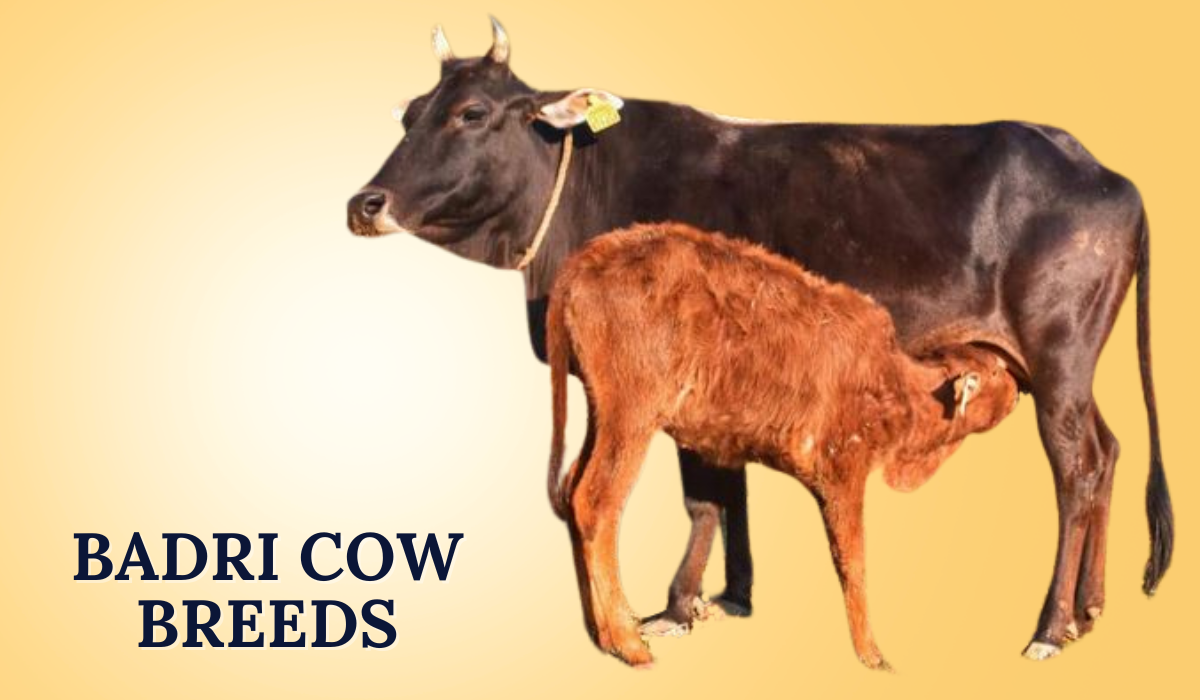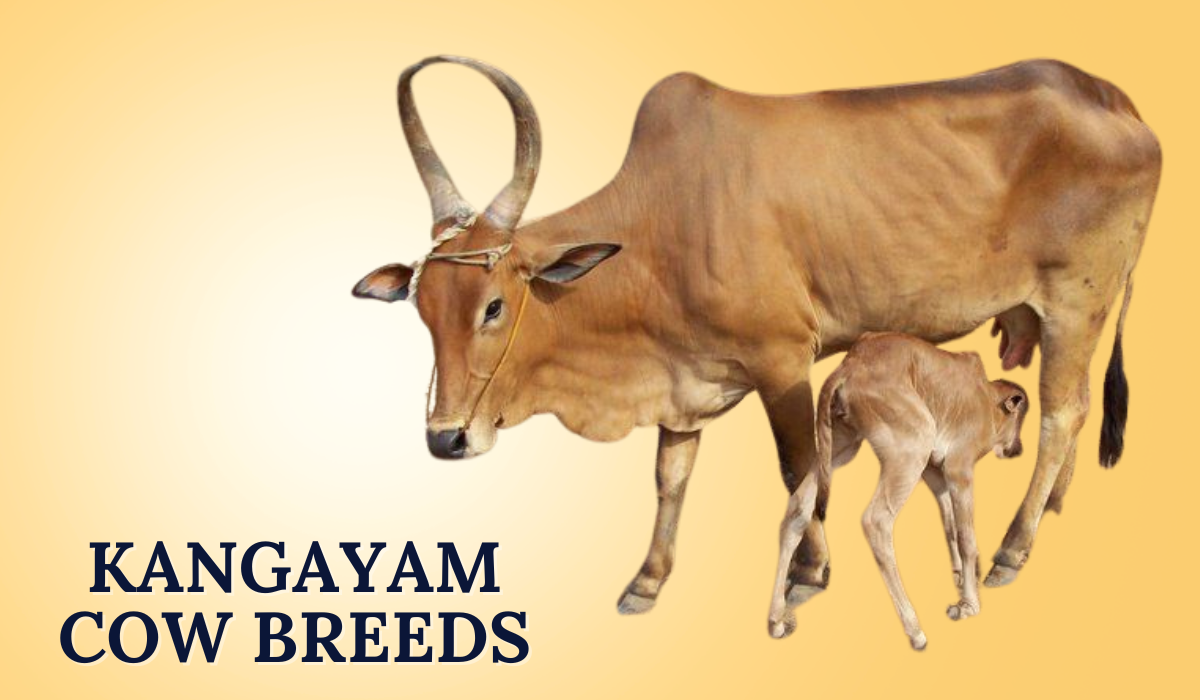Badri Cow Breeds in India are lesser-known yet highly valued indigenous cattle. Found in the hilly regions of Uttarakhand, particularly in the Badri region, this breed thrives in harsh climatic conditions, including the cold temperatures of the Himalayan foothills.
The Badri cow has adapted well to the local environment. It plays a significant role in the rural economy of these areas. The breed features a distinct appearance, including medium size, a sturdy body, long horns, and a robust constitution.
Farmers highly value Badri cow breeds in India for their milk production. Locals use the milk, which is also considered to have medicinal properties. Additionally, the breed is known for its docile nature, making it easy for farmers to manage in the steep terrains of its native regions.
These cows contribute significantly to the livelihood of local farmers. They are well-suited for draught work and milk production. Regarding milk yield, Badri cows are not as prolific as some high-production breeds. However, their milk is highly nutritious and sought after.
Efforts are being made to conserve and promote the breed. The Badri cow plays a crucial role in maintaining the agricultural and cultural heritage of Uttarakhand. The preservation of this breed is essential for sustaining local farming practices. It also ensures the biodiversity of indigenous livestock in India.
Characteristics and Origins of Badri Cow Breeds in Uttarakhand
The Badri cow breeds in Uttarakhand are indigenous to the hilly areas of the state, particularly in the districts surrounding the Kedarnath and Badrinath temples. These cows are medium-sized, with a strong and compact body built for endurance. Their adaptability to the cold climate and high altitudes is one of their standout features. With a calm and docile nature, Badri cows are easy to manage, making them a popular choice for small-scale farmers in Uttarakhand.
The coat of the Badri cow is typically short and thick, providing protection against the cold weather. They are generally grayish-brown, but some cows may also have a darker or lighter coat. The Badri cow has short, curved horns and a well-formed udder, making it ideal for milk production. Known for their low-maintenance nature, Badri cows thrive in tough conditions where other livestock might struggle.
Milk Production and Pricing of Badri Cow Breeds
When it comes to milk production, the Badri cow typically produces between 3 to 6 liters per day. This depends on the cow’s age, health, and feeding regimen. While the milk yield may not be as high as some other breeds, it is of excellent quality. It is rich in nutrients such as calcium, vitamins, and proteins. The milk from Badri cows is prized for its taste and texture. It is ideal for household consumption and for making dairy products like curd, ghee, and butter.
The price of Badri cow milk per liter in India varies by location and milk quality. On average, it is priced between ₹35 to ₹55 per liter. The price of processed products like ghee or butter is usually higher. This reflects the high quality of the milk. Badri cow milk benefits include its high nutritional content, which is good for bone health, immunity, and digestion.
Badri cow milk benefits for males include enhanced strength and stamina. The milk is also considered a natural remedy for joint pain and digestive issues. Additionally, Badri cow milk is well-known for its benefits for skin. Many people use the milk in skincare routines for its moisturizing and healing properties.
Price, Disease Resistance, and Health of Badri Cows
One of the key advantages of the Badri cow breed is their affordable pricing. The Badri cow breeds price under 50,000 makes them an accessible option for small and medium-scale farmers. Given their resilience to the local environment, these cows offer good value for money in terms of milk production and low maintenance. The relatively low cost of acquiring a Badri cow makes it a popular choice for farmers who are starting their livestock farming ventures.
In terms of health, the Badri cow breeds disease resistance is one of their strongest traits. These cows are hardy and have evolved to withstand the cold, hilly terrains of Uttarakhand, making them less susceptible to diseases compared to other cattle breeds. However, as with any livestock, Badri cows still require proper care, including vaccinations and regular health check-ups. The cows’ strong immune system helps them stay healthy even in harsh conditions, contributing to their popularity in the region.
Reproduction, Donation, and Conservation of Badri Cows
The Badri cow breeds praganency cycle is relatively short, with cows generally calving once every year. Farmers aim to breed cows that are high-yielding in terms of milk production and have desirable physical traits. These cows typically give birth to healthy calves, which, when well cared for, grow up to be productive animals. The Badri cow breeds’ babies are raised with care to ensure they inherit the desired traits from their mothers.
Many farmers also participate in Badri cow breed donation programs, donating healthy cows to religious organizations or farmers in need. This helps in the conservation of the breed, as well as supporting communities in rural areas that rely on cows for both milk and labor. The Badri cow for milk is an essential asset, and the donation programs help in spreading the benefits of this hardy breed to a broader population.
Conclusion : The Cow Breeds in India are a vital part of the region’s rural economy. These cows are known for their resilience, low-maintenance care, and quality milk, making them well-suited for the tough mountainous conditions. With a milk yield of 3 to 6 liters per day, Badri cows provide high-quality milk that is rich in nutrients and offers various health benefits.
The Badri cow breeds price under 50,000 offers a cost-effective option for farmers looking to invest in livestock without incurring high costs. Additionally, the breed’s natural disease resistance and adaptability to local conditions ensure that these cows remain a viable option for farmers in Uttarakhand and beyond.



